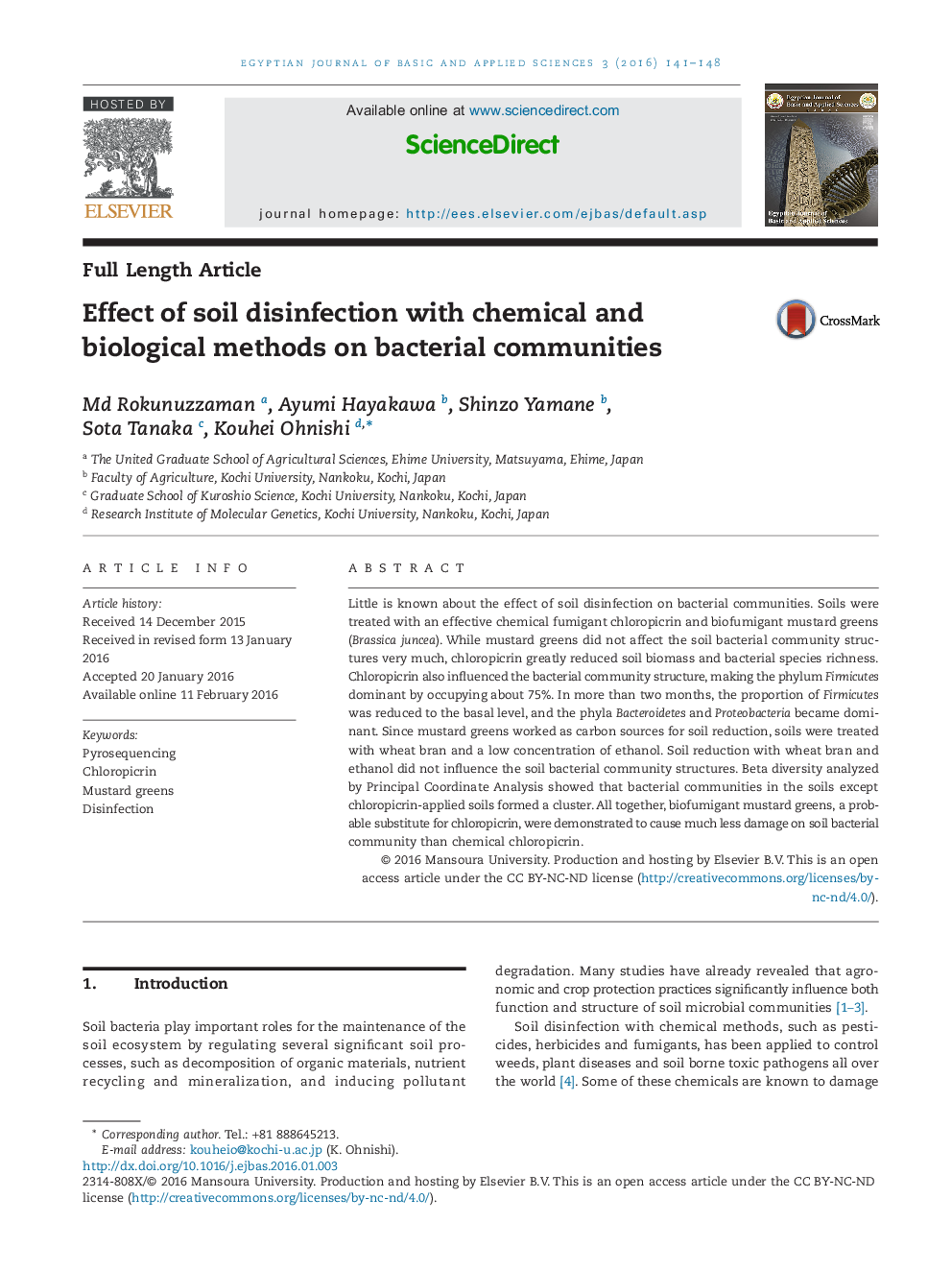| Article ID | Journal | Published Year | Pages | File Type |
|---|---|---|---|---|
| 560948 | Egyptian Journal of Basic and Applied Sciences | 2016 | 8 Pages |
•Chemical fumigant chloropicrin damages soil bacterial community.•Biofumigant mustard greens is less toxic than chloropicrin on soil bacteria.•Disinfection with soil reduction does not change soil bacterial community.
Little is known about the effect of soil disinfection on bacterial communities. Soils were treated with an effective chemical fumigant chloropicrin and biofumigant mustard greens (Brassica juncea). While mustard greens did not affect the soil bacterial community structures very much, chloropicrin greatly reduced soil biomass and bacterial species richness. Chloropicrin also influenced the bacterial community structure, making the phylum Firmicutes dominant by occupying about 75%. In more than two months, the proportion of Firmicutes was reduced to the basal level, and the phyla Bacteroidetes and Proteobacteria became dominant. Since mustard greens worked as carbon sources for soil reduction, soils were treated with wheat bran and a low concentration of ethanol. Soil reduction with wheat bran and ethanol did not influence the soil bacterial community structures. Beta diversity analyzed by Principal Coordinate Analysis showed that bacterial communities in the soils except chloropicrin-applied soils formed a cluster. All together, biofumigant mustard greens, a probable substitute for chloropicrin, were demonstrated to cause much less damage on soil bacterial community than chemical chloropicrin.
